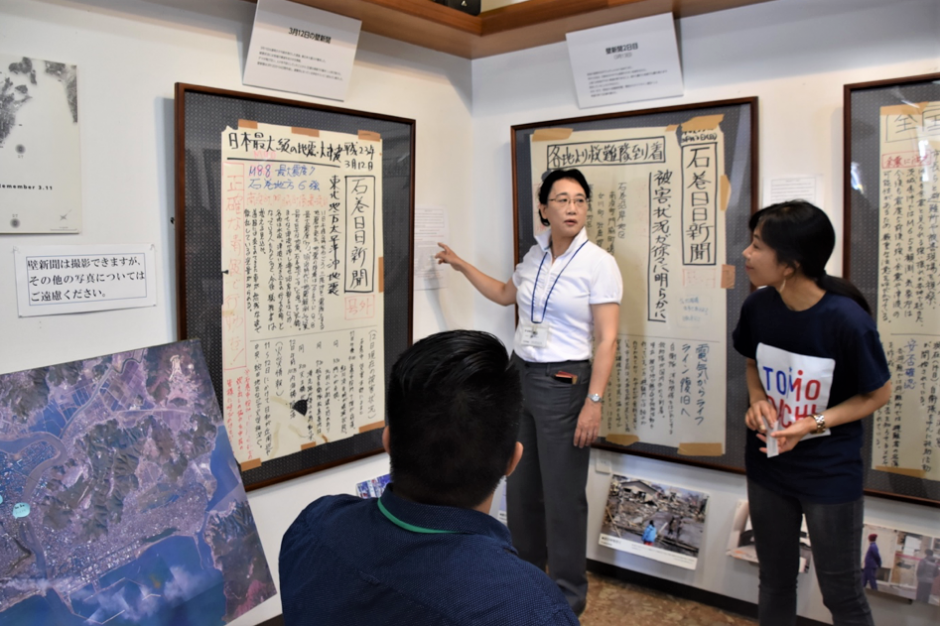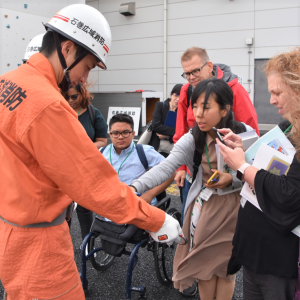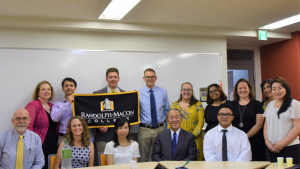Students from Randolph-Macon College Visit Japan and Learn about the Great East Japan Earthquake and Tsunami Disaster and Recovery Efforts

The TOMODACHI Randolph Macon Research Exchange Program concluded as participants spent two weeks in Japan, learning about the country, its history of natural disasters, and the Great East Japan Earthquake and tsunami.
The two institutions became exchange partners as a result of the first TOMODACHI Taylor Anderson Memorial Fund Education and Cultural Exchange Program in 2015. This year, the exchange program was spread across the academic year, with students and faculty from Ishinomaki Senshu University (ISU) visiting Randolph-Macon College (R-MC) in September 2018, and R-MC students and faculty visiting ISU in June 2019.
 The R-MC group included four faculty-student teams, each conducting one of the following substantive research projects: an oral history of the disaster, an analysis of the role of arts in recovery from disaster, institutional capacity and government response to disaster, and the role of family vs. foster care in Japan following disasters.
The R-MC group included four faculty-student teams, each conducting one of the following substantive research projects: an oral history of the disaster, an analysis of the role of arts in recovery from disaster, institutional capacity and government response to disaster, and the role of family vs. foster care in Japan following disasters.
During R-MC’s Tokyo visit, the group visited the Ikebukuro Life Safety Learning Center to experience its earthquake simulator and receive acute disaster situation training. The group also met with former Ambassador Ichiro Fujisaki, the co-chair of the Taylor Anderson Memorial Fund.
In Ishinomaki, Miyagi Prefecture, the group immersed itself in learning about the Great East Japan Earthquake and tsunami disaster and recovery efforts. While there, the group had the opportunity to meet with disaster survivors, visit with local city officials in both Ishinomaki and Onagawa, tour local social entrepreneur businesses, and receive instruction from the faculty at ISU regarding the areas of research each student-faculty pair was exploring. ISU also made sure to provide cultural opportunities for the participants, such as a kimono-dressing workshop.

Reflecting on the experience, one participant said, “TOMODACHI has given me a once-in-a-lifetime opportunity that has allowed me to engage with Japanese culture and the people of Japan in ways that I never thought possible during my time as an undergraduate student.”
This program was funded by the TOMODACHI Fund for Exchanges through generous contributions from Toyota Motor Corporation, Mitsubishi Corporation, and Hitachi, Ltd.


